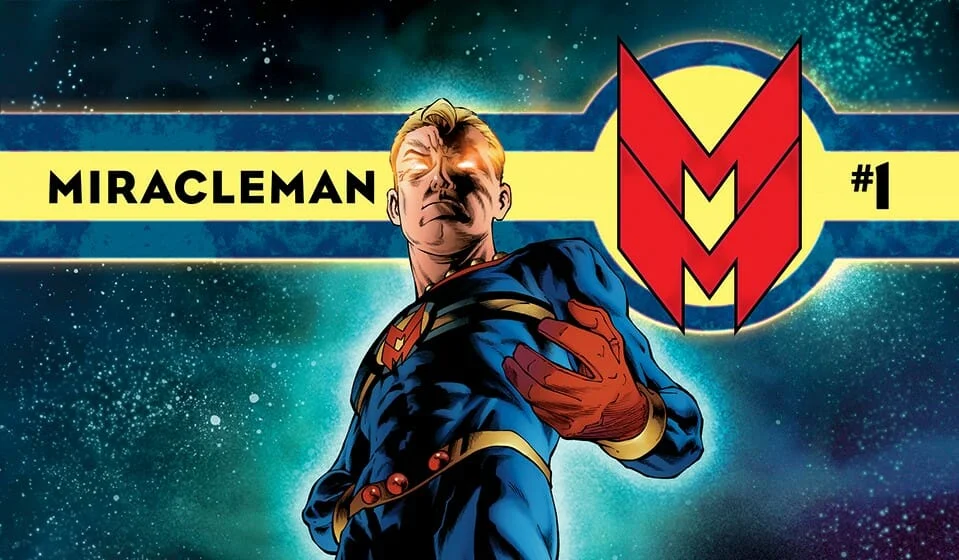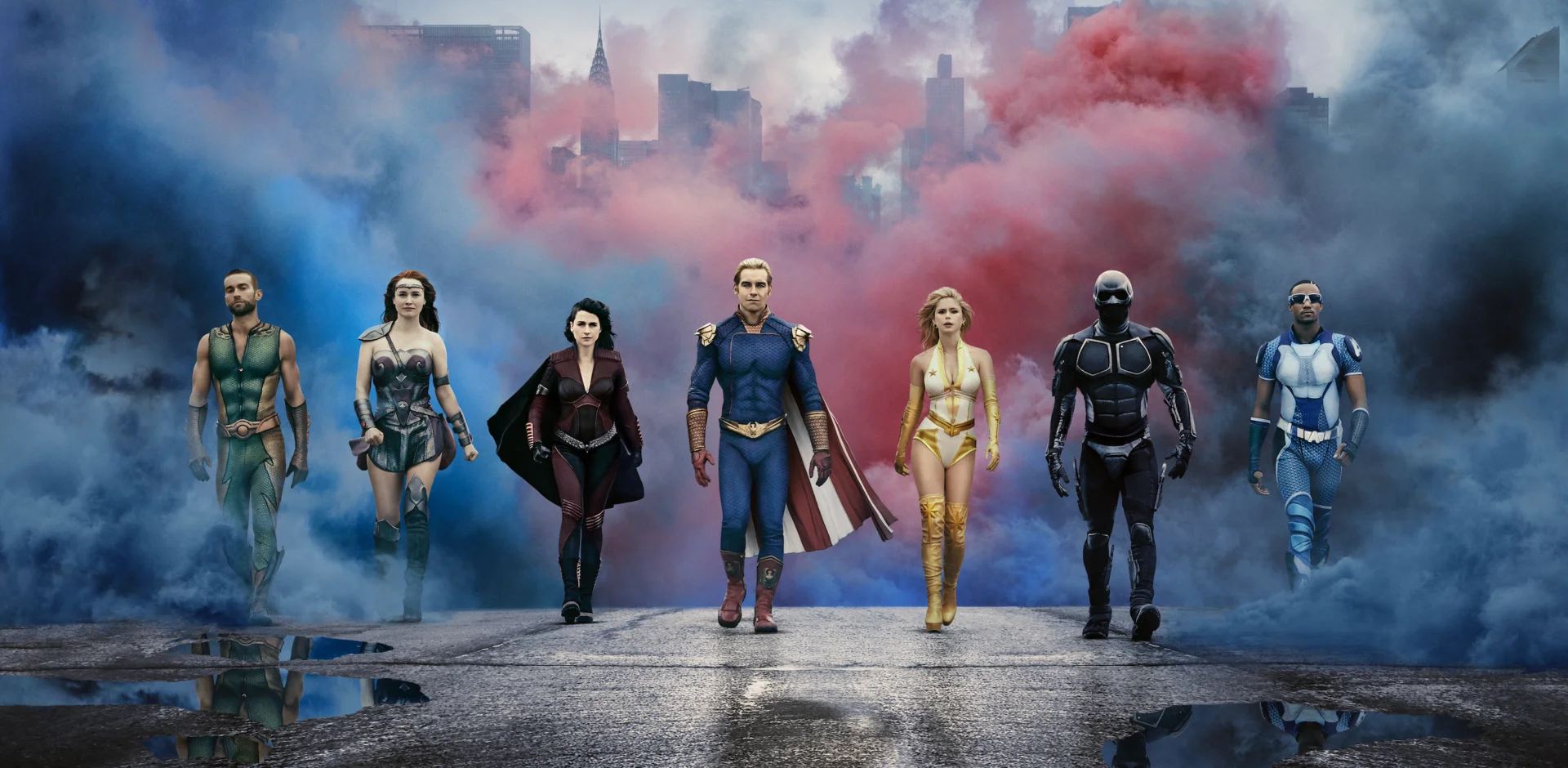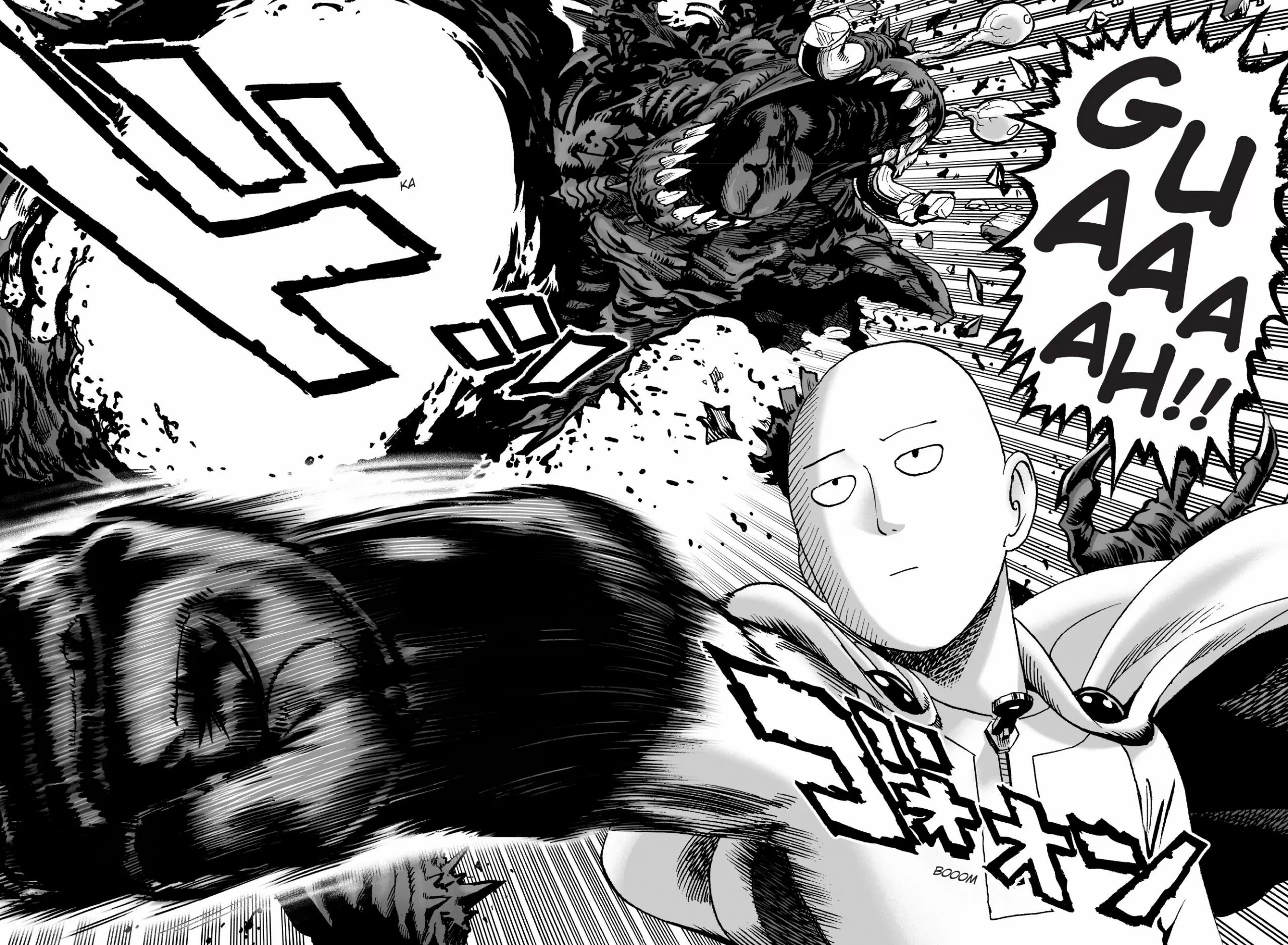
One-Punch Man | The hero Saitama is the avatar of pure entertainment
Year
Stories are often about conflicts. The struggles the characters will face to reach their goals are what make the better part of them. One-Punch Man flips this principle upside down since the protagonist Saitama always wins with one punch and lives a quite flat life.
The authors ONE and Yusuke Murata combine a parody and a tribute to battle shonen (comics about spectacular fights like Dragon Ball). ONE started to publish the story on his blog in 2009, gaining exponential success despite the poor drawings. Then, in 2012, after Murata asked him to illustrate the story for him, Weekly Young Jump started to publish it.
What strikes the reader first is the parodying style, addressing all the stereotypes and recurrent features of the genre. However, on a closer look, the witty use of the legacy of previous works and the remarkable illustrations stand out as major elements of this manga too.
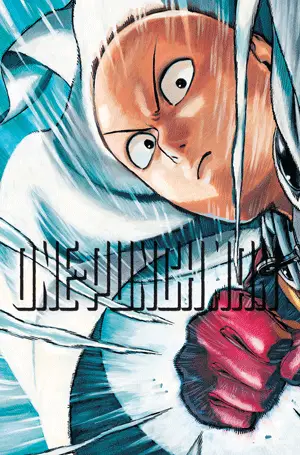
One-Punch Man: Saitama, the hero who has it all too easy
The protagonist Saitama became the strongest individual of all time thanks to unimaginable trainings. Namely, he did one hundred push-ups, sit-ups and squats every day for years. And he got bald because of it. All of this because he wanted to become a hero “for fun”.
The plot is about Saitama living a normal life, caring about taking out the trash and not missing supermarket discounts. In the meantime, scary and dangerous monsters cross his path, but he always takes them out with a single blow. While his frustration grows because he can no longer find someone who can actually challenge him, his self-proclaimed disciple Genos torments him because he wants to become as strong as Saitama. Moreover, since the monsters pose a serious threat to mankind, a Heroes Association arises to fight them. Association where Saitama and Genos will enroll, following opposite paths.
It’s over 9000!
The readers are used to comics where the protagonists have to train hard to defeat their enemies. In One-Punch Man there is only the boredom resulting from fights that are too easy. The joke is simple and also, in the long term, redundant. The more the enemies will boast about their abilities, the more Saitama or somebody else will humiliate them. Moreover, the protagonist is an anonymous individual because of his flat backstory, flat motives, flat ambitions. It’s as though he has been poorly outlined and yet is perfect for a story where everyone is either obsessed by becoming stronger or by ruling over others.
However, as ONE makes fun of shonen manga, at the same time he displays a thorough knowledge of them. Like all the well-managed satires, he conveys fondness for the genre he is parodying. Thanks to this, he has been able to take from and reshape the legacy of previous comics, adapting it to the present time where self-mockery and memes culture are ground elements.

One-Punch Man and its protagonist Saitama actually draw inspiration from two sources. The manga is certainly influenced by comics like Dragon Ball, Hunter x Hunter, Naruto, Hokuto no Ken and even more recent and violent works like Attack on Titan. But also the iconic Kamen Rider or super sentai series like Power Rangers are a major reference point, with their eccentric monsters fought by relentless heroes.
Thus, the level of engagement about the parody can vary from superficial fun to a deeper understanding of the references. Something similar to Adventure Time, which takes inspiration from widespread fairy tales, perverting them into something grotesque and entertaining.
Not just a parody
This mechanism, though, even if well-crafted and paced, couldn’t hold a more complex narrative on its own. This is when the other characters come in and, also in this case, the legacy of previous works emerges. Thanks to the expedient of the Heroes Association, the authors could use all kinds of characters, superpowers and special moves. In doing so, the manga resembles the later My Hero Academia in the creation of a superhero-oriented world.
However, the two comics are quite different. In the case of One-Punch Man, the Heroe Association obtains a two-part goal. On one side, it makes a parody of clichéd characters, but on the other it also employs their cool and thrilling aspects, in terms of designs and abilities. While One-Punch Man jokes about basically everything, it also entertains the reader by showing him spectacular fights and appealing characters. The cartoonist Murata uses the panels almost like he was writing the storyboard for an animated version, giving great fluidity to the battle scenes. He makes highly detailed panels, often offering enjoyable splash pages and full-body characters. And yet, quickly shifts to gag scenes, where he sometimes kept the poor drawings by ONE, perfectly fitting for Saitama’s essence.
In the end, One-Punch Man isn’t just a parody. Broadly speaking it’s a product for pure entertainment, which manages to attract the readers’ attention on multiple levels. After the first, mostly parodying and stand-alone episodes, a plot with a clear direction unfolds. Even if not original, it remains solid thanks to the never-ending flow of new characters and the thrilling fights.
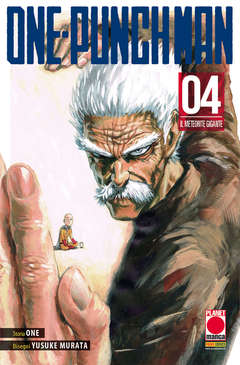
Beneath the shallow surface
Even if not done in any depth, One-Punch Man also brings up the theme of approval, since Saitama has great potential, but struggles with society because it doesn’t acknowledge him. He shifts from moments of awareness where he gives wise advice to moments of frustration because he never manages to act heroically when everybody is watching. At the same time, Saitama’s lesson is that, even if the general public doesn’t acknowledge us, what matters the most is self-esteem and the approval of the people closest to him.
Furthermore, a question often comes up throughout the story. What’s the point of being the strongest? Saitama appears often frustrated because he never gets to experience the thrill of a fight. Metaphorically speaking, this addresses the obsession one can have for reaching goals, objectives and fulfillment. The character of Saitama jokingly shows that there is no point in cutting the finish line too soon. Once the biggest ordeals are overcome, there won’t be anything else to experience.
One-Punch Man won the Sugoi Japan Award in 2016 as Best Manga and has also a successful anime adaptation.
Tag
Buy a ☕ for Hypercritic




